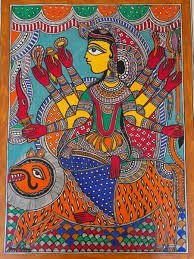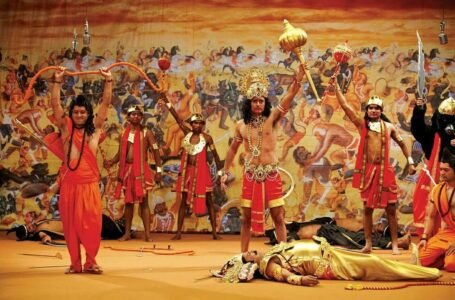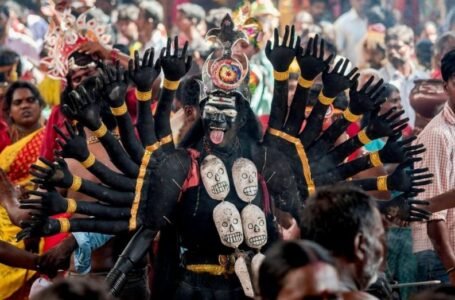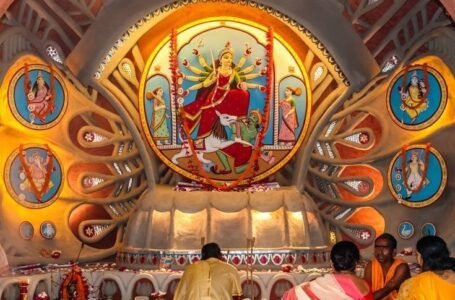Dumaria Bhajani of Bihar: The Folk Legend of a Protectress Deity

Renowned for its historical and cultural richness, the state of Bihar boasts of a vibrant folk heritage that reflects the character of its people. Among its myriad tales, the story of Dumria Bhajani stands out as a story of divine intervention, resilience and community solidarity. Bhajani is regarded as the guardian deity of Dumaria and holds a revered place in the hearts of the villagers. Its tales are intimately connected to the identity and heritage of the community, telling of their struggles, triumphs and enduring gratitude.
This article explores Bhajani’s origins, his role in local folklore, the rituals and festivals celebrated in his honor, and his lasting impact on the lives of his devotees.
The Origins of Bhajani: A Divine Protector
A village full of despair
The legend of Bhajani comes from Dumria, a small but picturesque village in rural Bihar. A few decades ago, the village faced an unprecedented famine that pushed its residents to the brink of despair. Crops failed, water sources dried up, and hunger plagued every household. A sense of despair swept over the once prosperous village as fervent prayers echoed through its fields and homes.
Bhajani in heaven
In the midst of this chaos, Bhajani’s presence emerged as a beacon of hope. Bhajani Divya is said to have appeared in the dreams of the village elders and promised salvation on the condition that they honor her as their patron. Inspired by this vision, the elders mobilized the community to build a humble shrine in his name. Soon after, the skies opened up, and rain fell that refreshed the dry areas. The famine ended and Dumaria was saved. Bhajani was hailed as the divine savior of the village and his religion became the cornerstone of Dumria’s cultural and spiritual identity.
Bhajani’s Role in Local Folklore
The hallmark of resilience is strength
Bhajani’s tale goes beyond divine intervention—it encompasses the strength and resilience of rural women. Usually patronizing yet powerful, Bhajani symbolizes the many women who run households, support agriculture and ensure their families survive against all odds and her story is those struggles and triumphs of these heroes who this song was not used much.
Protector of agricultural nature
As a deity associated with rain, fertility and prosperity, Bhajani plays an important role in the agricultural cycle. Farmers invoke his blessings at the beginning of the sowing season and express their gratitude after the harvest. Its presence is believed to harmonize human efforts with the forces of nature, giving victory to the efforts of the villagers.
Rituals and Celebrations
Bhajani is a festival of faith
The annual Bhajani festival held during the rainy season is the most awaited event in Dumria. This auspicious festival honors the deity’s contribution to the community and strengthens the bonds among the villagers.
Special Rituals:
- The sacred bath of the idols
The Bhajani idol is taken to a nearby river for a ritual bath. This event symbolizes cleansing, renewal and washing away past problems.
- Rice water supply
The villagers offer the first harvest of rice as a sign of gratitude. Representing life, water is also offered in honor of Bhajani’s role as the nourisher of life.
- Revelation of the Sanctuary
The shrine is surrounded by clay lamps, its gentle light representing hope and light in times of darkness. This ritual reminds us of the role of bhajani in guiding the community through challenges.
Public demonstration
The festival is incomplete without traditional music and dance. Folk songs like birha and kajri tell the tale of bhajani while vibrant dance moves bring its story to life. These performances are a way to preserve and pass on the story of the goddess to young people, ensuring that her legacy continues.
The Shrine of Bhajani
A Center of Community Life
Bhajani Tirtha is not a place of worship—it is a communal space where villagers gather to pray, celebrate and reflect. Its simplicity reflects the humility of its followers, who emphasize collective effort and well-being over grandiose displays of wealth.
Sacred symbols and elements
The idols
The sculpture, created with locally sourced clay, reveals the goddess’ deep connection with the earth. This material innovation reinforces the villagers’ respect for nature.
Sacrifice
Typical offerings include rice, turmeric and flowers, symbolizing life, health and beauty.
The sacred neem tree
The neem tree near the shrine is considered sacred. It is believed to be the spiritual abode of Bhajani, who is seen as a guardian who protects the village from danger.
Bhajani’s Relevance in Modern Times
Source of unity
In a time of rapid change, Bhajani remains a unifying force in Dumaria. His religion transcends racial, class, and economic barriers, bringing people together to celebrate their common heritage. This solidarity strengthens the social structure of the village and fosters cooperation and mutual support.
Promoting environmental awareness
Bhajani’s association with nature inspired the villagers to adopt sustainable practices. Forestry campaigns, water conservation efforts and organic farming initiatives are often conducted in his name. These activities not only honor the god but also ensure the long-term prosperity of the community.
Preserving the Legacy
Challenges to the Bhajani tradition
Despite his importance, Bhajani faces many challenges to his religious tradition. Migration, modernization and declining interest among young people threaten to destroy this rich cultural heritage. Many fear that the Bhajani legend may fade with the passage of time, leaving only fragments of a once flourishing tradition.
Community leaders and cultural enthusiasts have taken active steps to preserve Bhajani’s heritage:
- Oral history records
Efforts are being made to transcribe the oral statements of the officials in order to preserve Bhajani’s statement in writing.
- Introducing Bhajani in Education
Schools in Dumaria have begun incorporating her story into their curricula, using folk art workshops and storytelling sessions to engage students.
- Leveraging Digital Platforms
Social media and digital outreach campaigns are being used to share Bhajani’s legend with a global audience, fostering greater awareness and appreciation of this unique tradition.
Conclusion
Dumaria Bhajani’s story is a testament to the enduring power of faith, resilience and community. As a patron deity, Bhajani capitalizes on the harmonious relationship between nature and society, reminding devotees of the importance of balance and gratitude.
By celebrating Bhajani, Dumria villagers are not only preserving their past but also paving the way for a sustainable and inclusive future. Through a dedicated effort to document and celebrate his legacy, the story of Bhajani will inspire generations, ensuring that this cherished chapter of Bihar’s folklore remains alive and vibrant.


